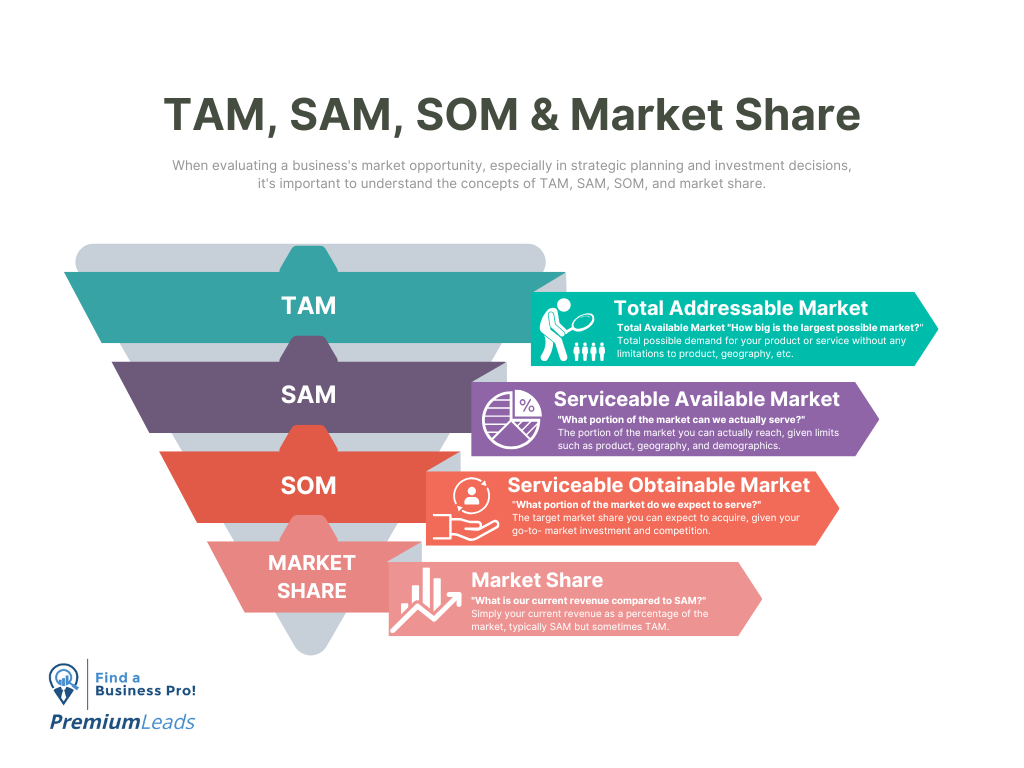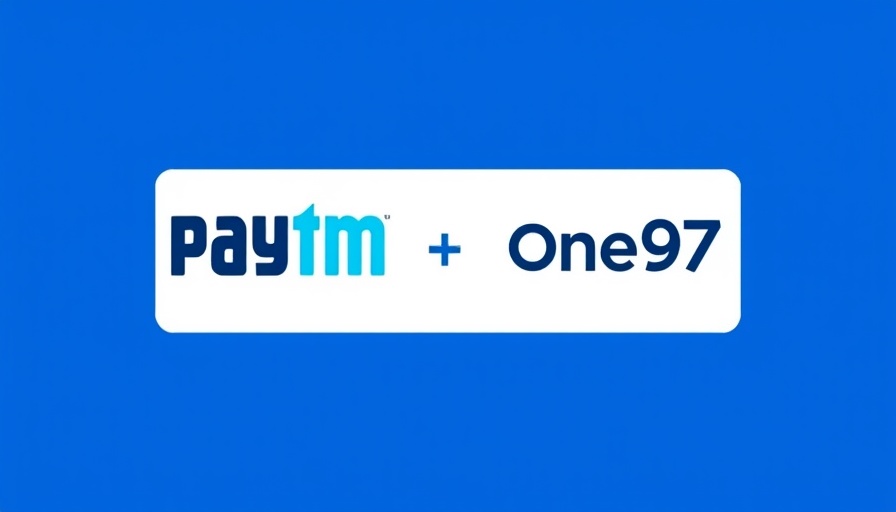When evaluating a business's market opportunity, especially in strategic planning and investment decisions, it's important to understand the concepts of TAM, SAM, SOM, and market share. Here’s a breakdown of each term and how market share fits into this framework:
1. TAM (Total Addressable Market):
- Definition: TAM is the overall revenue opportunity available if a product or service achieved 100% market penetration, meaning if every potential customer in the market were to use the product.
- Example: If you sell a software solution for businesses globally, TAM would be the total revenue if every business in the world purchased your software. TAM provides a macro view of the market size.
2. SAM (Serviceable Available Market):
- Definition: SAM is the portion of the TAM that your business can realistically serve based on factors such as geographical reach, capabilities, and target audience.
- Example: If your software only supports English, then your SAM would only include English-speaking businesses out of the total global market. SAM narrows the TAM to the subset of customers you can actively serve.
3. SOM (Serviceable Obtainable Market):
- Definition: SOM is the portion of the SAM that your business can capture in the short term, given your current resources, competition, and sales capacity. This is the market share you can realistically expect to win.
- Example: If your current sales team can only focus on mid-sized English-speaking companies, SOM would be the subset of SAM that includes those customers.
4. Market Share:
- Definition: Market share is the percentage of a market that a business or product captures. It’s calculated as the company's sales revenue or unit sales as a proportion of the total sales in the market.
- Formula:
Market Share=Total Market Sales Your Company’s Sales×100
- Example: If the total revenue for mid-sized English-speaking companies (your SOM) is $1 billion, and your company generates $50 million from that market, your market share would be 5%.

Putting it all together:
Imagine you’re launching a product for small businesses:
- TAM might be $100 billion if all small businesses worldwide used your product.
- SAM could be $10 billion because you only target small businesses in North America.
- SOM might be $500 million, which is the market segment you could actually reach based on your current business resources.
- Market share represents the percentage of the SOM that you capture after your sales efforts (e.g., if you capture $50 million in revenue, that’s a 10% market share of your SOM).
Understanding TAM, SAM, and SOM helps businesses focus their efforts on the most realistic market opportunities, while market share shows how much of that market opportunity the business has won.
 Add Row
Add Row  Add
Add 




Write A Comment